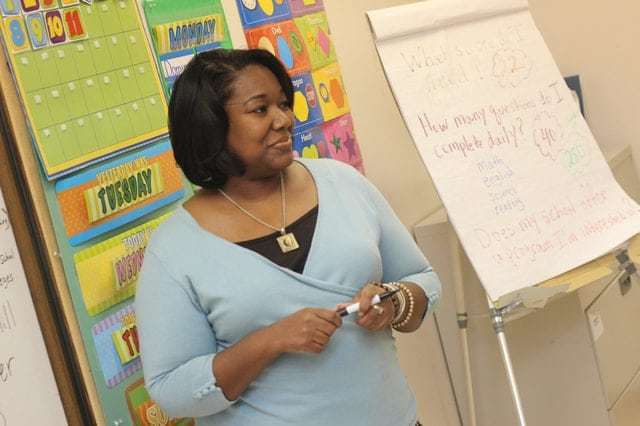Strategies to Develop a Positive Teacher-Student Relationship
In recent months, many educators have asked me about developing good teacher-student relationships. I see this as a good thing.
 I believe this area of education has been grossly undervalued and overlooked for many years, especially at the secondary level. There is much research going back to the 1980s that demonstrates the benefits of a positive teacher-student relationship. These relationships are important in all schools, regardless of income levels or cultural backgrounds.
I believe this area of education has been grossly undervalued and overlooked for many years, especially at the secondary level. There is much research going back to the 1980s that demonstrates the benefits of a positive teacher-student relationship. These relationships are important in all schools, regardless of income levels or cultural backgrounds.
The question is: what does a positive teacher-student relationship look like? Part of the issue is that many teachers seldom take the time to figure out what a good teacher-student relationship means to them. In addition, many administrators tell teachers they want to see positive relationships but don’t explain what they’re looking for.
There are probably as many ways to develop relationships as there are individuals on the planet. However, there are some basic fundamentals in relationship building between teachers and students that seem to work in almost any circumstance. What follows is a list of the fundamentals as I have observed them in the most successful classrooms nationwide!
Care
There’s a saying that, “Kids don’t care how much you know, until they know how much you care!” The most important thing is to build a foundation based on students knowing that you care about them.
It’s important they understand that they are more than just a test score to you. Find out about them as human beings, and interact with them as people first and students second. They’ll go out of their way to learn your material when they know you have their best interests at heart, and that your efforts are about more than just teaching the material.
So what does caring look like in a teacher-student relationship? Here are just a few examples:
- Asking questions. “How was your weekend?”
- Remembering the details. “I remembered you said your mom was sick. How is she doing?”
- Paying attention. “You seem a little down today. Is everything okay? Is there anything I can do?”
Time
Give the students individual time as much as possible. Too many teachers have the mistaken belief that they don’t have time to interact with the students individually.
Time can be made by prioritizing, and especially by the teaching methods that you use to present material. If too much time is spent lecturing, there’s less time for face-to-face interaction with the students.
Giving students more responsibility for their own learning using different modalities frees the teacher to do more one-on-one interactions. Face-to-face time is how humans bond!
So what might devoting your time to each student individually to build a relationship look like?
- Working out obstacles to learning. “Don’t worry about it. I’m going to sit right here with you and we’ll do it together.”
- Devoting after-class time. “See me after class and I’ll help you with this assignment.”
- Consider group time. “Everyone, get a partner and share how you work the problem. I’m going to walk around and visit the various groups as you share your wonderful work with each other.”
Patience
Be understanding and positive when students make mistakes. All of us needed positive guidance as we were growing and developing.
When students know that you’re not going to be overly judgmental and critical as they’re learning, they are more likely to engage in the learning process.
What might being positive look like in your teacher-student interactions?
- Being understanding of mistakes. “It’s okay to make a mistake. This is how we learn!”
- Encouraging them to take their time. “It takes me a while to pick up certain things too. It’s okay. Take your time!”
- Showing devotion to their success. “I’m here to help and I love the way you’re working so hard on this. We are going to get this! Whatever it takes, because you are awesome!”
Pointing Out Strengths
Positive affirmation in the form of pointing out strengths is something some students rarely experience. Be that special someone. Let them know that you see them, the whole person, the wonderful often hidden talents others may not acknowledge.
Sometimes their strengths are things that they don’t recognize in themselves. Pointing out strengths is an example of one of the little things that causes students to bond with a teacher. It helps the student realize that you see them as a person and value them. It also builds confidence in the student!
How can you point out strengths in students to build that essential teacher-student relationship for success?
- Acknowledge their efforts. “You’re such a hard worker. I love the way you work hard and try hard in my class every day. Thank you for that!”
- Point out their attention to detail. “I love the way you’re always able to pick out the main idea in a story or a passage. You are absolutely phenomenal with this. Keep it up!”
- Praise a specific skill. “Your math skills when it comes to long division make me so proud. You are outstanding with this!”
There are obviously many other ways to build a good teacher-student relationship; these are just a few things that may help. If you have others, try writing them out and breaking down good examples of how to use these things more effectively and positively. Please feel free to share your ideas as well!
